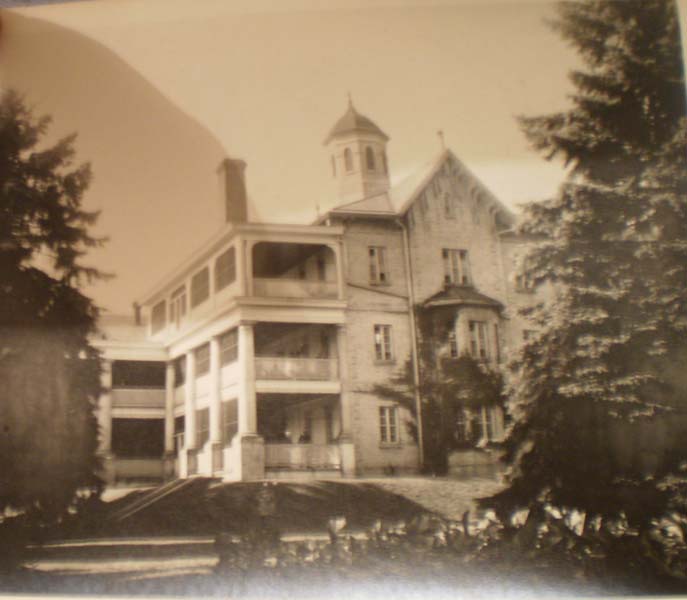The Kirkbride Plan

Balconies, main building, after 1909.
These provided sun and fresh air in the wards, as well as extra bed space for patients. RMHCL
1 |
2
Before the Asylum | Asylum Design | The Kirkbride Plan | Challenges
Asylum architects in the mid-19th century often followed the popular Kirkbride plan. This plan called for a structured, highly organized building. This was to ensure patients would be placed in a rational, sensible environment, away from the outside stresses of the world. The main administrative offices were centrally located, with the superintendent's office in the very middle of the building, and male and female patients lived in wards in opposite wings.
Kirkbride buildings were often built in the "echelon" style, a zig-zag pattern which made the most sunlight available to each ward. Fresh air, plenty of sunshine, and calming views of natural landscapes could help create a healthy, pleasant atmosphere for patients. Kirkbride's followers believed asylums should be surrounded by many acres of green space, where patients could work and relax, which was an important feature of moral therapy.
Superintendents also tried to include attractive elements inside the LAI, such as colourful bedspreads and finely made furniture. The first Superintendent, Dr. Henry Landor, believed that having pictures on the wall could be soothing to patients. In many asylum reports Dr. Landor mentioned repainting and new woodwork to brighten up the asylum, and had asked for more decorative work to be done in other parts of the building to make the asylum appear more attractive. It was often the paid wards that had the most attractive appearance, while the free wards usually contained only the bare necessities for patients.
In 1909 Superintendent Dr. William Robinson praised the curative effects of solariums, which were opened in the summer. Later he would argue that hospitals should be built according to the modern factory building of the 1920s with one or two stories at most with lots of windows. Superintendents were well aware of the criticisms towards asylums, since many people believed them to be large, cold institutions. They were always trying to improve of the condition of their hospitals by various means, whether by repainting rooms, fixing staircases and porches or creating closed-in, heated balconies as open-air wards.